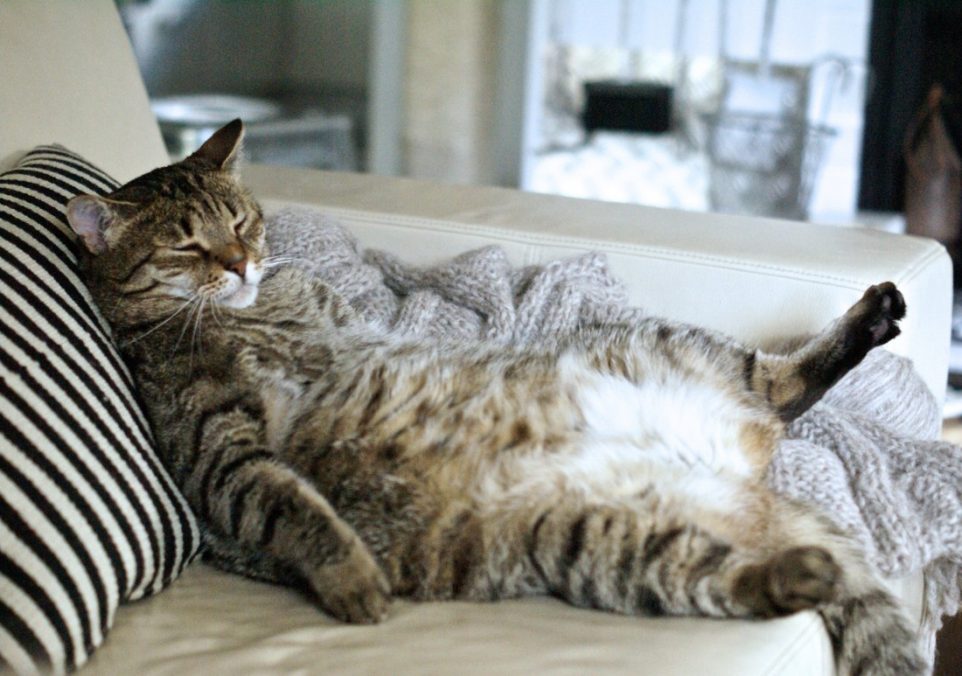How to Tell If My Cat is Overweight and What to Do About It

Let’s talk about something that doesn’t get enough attention in the world of cat care—weight management. Cats, just like us, come in all shapes and sizes, and while some flaunt their fluffy bellies as they strut around the house, it might be time for us to pay closer attention to what’s behind that adorable jiggle. Our feline friends can easily tip the scales if we’re not mindful, and this can lead to various health issues down the line. I mean, who doesn’t love to spoil their cat with treats now and then? But like us sneaking that extra cookie, those calories add up, and before you know it, your cat’s sleek silhouette has transformed into something more… spherical.
When I first adopted my cat, I was guilty of overindulging her whims, thinking a bit of extra kibble here and there wouldn’t hurt. But when her playful sprints turned into leisurely waddles, I realized it was time to reassess her diet and activity level. It’s a balancing act, and every cat owner eventually learns that what works for one feline might not work for another. So, let’s dive into the nitty-gritty of what your cat’s weight should be, how to recognize if your furry friend is packing a few too many pounds, and the steps you can take to help them get back on track.

What’s the Ideal Weight for Cats?
First things first, determining the ideal weight for your cat can be a bit of a guessing game, but there are general guidelines that can help. The average domestic cat should weigh around 8 to 10 pounds, but this can vary significantly depending on the breed, age, and overall build of your feline friend. For instance, a svelte Siamese might hover closer to the lower end of that range, while a sturdy Maine Coon could tip the scales at 25 pounds and still be perfectly healthy.
To figure out what’s normal for your cat, take a good look at their body shape rather than just the number on the scale. You want to be able to feel their ribs easily without pressing too hard, and when viewed from above, they should have a noticeable waist behind the ribs. A small pad of fat on the belly is normal, but it shouldn’t be swinging side to side like a pendulum when they walk.
Signs Your Cat Might Be Overweight
It’s not always easy to notice when your cat starts gaining weight, especially with all that fur masking the extra pounds. However, there are a few telltale signs that your cat might be on the heavier side. A significant indicator is a lack of a discernible waist and a rounder, more barrel-like body shape. If you notice your cat struggling to groom themselves, particularly around the back and tail area, this could also signal that they’ve gained too much weight.
Another key sign is changes in behavior. Overweight cats may become less active, preferring to lounge around rather than engage in their usual antics. If your previously playful kitty is suddenly more interested in napping than pouncing, it might be time to evaluate their diet and lifestyle. Additionally, frequent panting or difficulty breathing after minimal exertion is a red flag that shouldn’t be ignored.
How to Manage Your Cat’s Weight
If you’ve determined that your cat is carrying extra weight, don’t panic. There are several steps you can take to help them shed those pounds and return to a healthy weight. First and foremost, take a closer look at their diet. It’s crucial to feed them high-quality cat food that meets their nutritional needs without unnecessary fillers. Consult your vet to ensure you’re providing the right portion sizes, and avoid free-feeding where food is available at all times. Instead, establish regular feeding times to help regulate their metabolism.
Treats should be given sparingly, and it’s important to choose healthy options. Try offering small pieces of cooked chicken or fish as a reward instead of calorie-dense commercial treats. Another great tip is to use playtime as a form of exercise. Interactive toys, laser pointers, or even a simple piece of string can encourage your cat to move around and burn calories. Dedicate at least 15 to 20 minutes a day to play with your cat, creating a routine that both of you can look forward to.
When it comes to weight loss, slow and steady wins the race. Drastic calorie cuts can be harmful, so it’s best to aim for gradual weight loss over several months. Your veterinarian can help you design a weight loss plan tailored to your cat’s specific needs. This plan might include a specialized diet food formulated for weight management, which provides all the nutrients they need while helping them feel full on fewer calories.
Your Pet’s Best Interest, Always
At Pet Institute, we take pet care seriously. We're dedicated to transparency, impartiality, and the well-being of your pets in every article, review, and recommendation we provide. Our unwavering commitment to these principles ensures that you, our valued reader, always receive reliable and unbiased information. Let us be your trusted guide in the world of pet care and companionship.